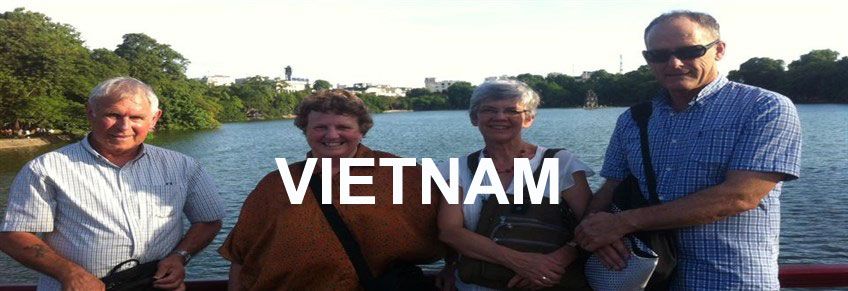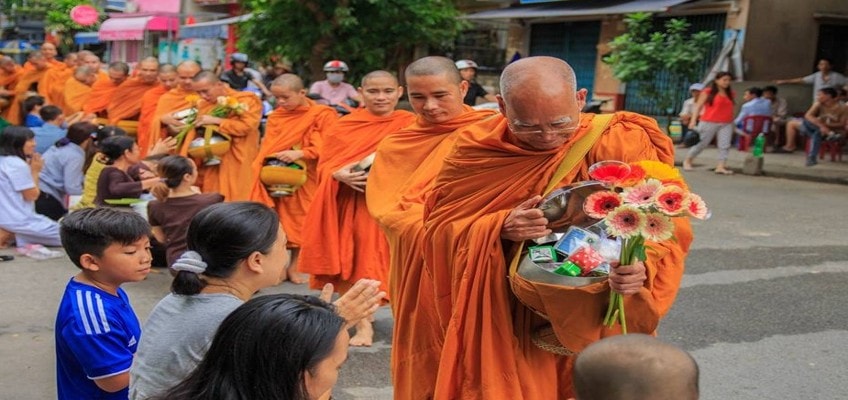
Vietnam is identified as an atheist country with a lot of the population not religious (or follows folk religions). Although this country does have the ability to enjoy freedom of religion with certain limitation in place on worship, such as not having any ideology that contradicts with the government, while the state-sanctioned religions are limited.
Even so, there are still several major religions that are followed throughout Vietnam with the most popular relating to Mahayana Buddhism with an estimated 85.5% share of the religious population. Some of the other religions that are likely to be noticed on the Vietnam travel with a significant following include Cao Dai, Hoa Hao, Islam, Theravada Buddhism, Protestantism and Catholicism.
Triple religion (tam giao)
The term "three teachings" relates to the combined Buddhism, Taoism and Confucianism found in Chinese philosophy. Overtime in Vietnam, these phrases have started to become entwined with one another, as well as the beliefs of the indigenous Vietnamese people, which lead to the creation of a syncretic religion that is followed to a certain degree by most of the population of Vietnam.
Even though Vietnam is mostly regarded as a country that follows Buddhism with an estimated 85% of the population visiting a Buddhist pagoda at regular intervals, it may be more accurate to regard the Vietnamese as people that follow different religious traditions in Asia. This type of system with a mixture of beliefs is called triple religion (tam giao).

Buddhism
It is still quite vague how Buddhism first made its way to Vietnam. The likely influence of this religion came from the Chinese in the first to second centuries AD or from India in the third or second centuries BC. However, it is known that on reaching the second century, Vietnam has started to become a major Mahayana Buddhist region. For the following 18 centuries, most of the teachings in the country came from Chinese Buddhism. Also, the Theravada Buddhism (directly connected to Indian traditions) was becoming more popular in the south of the country – which at the time was Khmer territory until the 17th century (and not Vietnamese).
For the period 1954 to 1975 which was when the north and south of Vietnam was split, the President Ngo Dinh Diem, who favoured the Catholic Vietnamese minority started to introduce a variety of policies that not only gave favour to Catholics but helped to alienate the Buddhist majority (50-70% of the religious people). At this time, the ability to get freely involved in Buddhist worship was restricted which resulted in demonstrations against the government. These past protests are now known as the "Buddhist crisis". This crisis resulted in the self-immolation of the monk Thich Quang Duc, which took place on a Saigon street in 1963. It wasn’t long after this that President Diem was deposed.
Once the Buddhist crisis came to an end, Buddhism in the country witnessed growth in political might for the rest of the 1960’s which lead to the formation of the Unified Buddhist Church of Vietnam. But, with the fall of Saigon in the mid-1970’s, there were further restrictions imposed by the communist state in relation to performing Buddhist practices. These restrictions have also applied to several other religions with many of the rules still in place today.
Modern Vietnam has Buddhism as its most followed religion with plenty of temples for the tourist to explore while on the Vietnam holidays. It is mostly practised in a syncretic style, which means that a variety of traditions are incorporated within Buddhism, while also including philosophy from other faiths like Taoism and Confucianism. The dominant sect is Mahayana Buddhism while others include Hoa Hao and Theravada.
The religious tradition of Hoa Hao is based on a kind of Buddhism that was created in the 1930’s in southern Vietnam by Huynh Phu So, and has a high number of followers in this region of the country.
Christianity
The most well-known Christian church in Vietnam is referred to as Catholicism, which first arrived in the country in the 16th century when introduced by Portuguese Catholic missionaries. The popularity of this religion was boosted by the French colonial rule, as well as the Jesuit missionaries that continued to visit the country in later years. Christianity further prospered in the 18th century, when the Emperor Gia Long (1762 - 1820) was befriended by Pigneay de Behaine who was a missionary. This helped to gain favour for the church and made sure its religious activities could continue without interruption.
By contrast, the Protestant faith did not appear in Vietnam until 1911 and was first introduced by Robert A. Jaffray who was a Canadian missionary. Today, the total number of assemblies for the Protestant group is in the region of 75,000, while the Catholic Church is much higher at nearly 5 million.

Cao Dai
Introduced to southern Vietnam in the 1920’s, the monotheistic religion of Cao Dai pays credit to God and not Buddha or any prophet. There are a growing number of Cao Dai believers in the country, and these religious groups are involved in practices like prayer, vegetarianism, non-violence, and veneration of ancestors.
Visiting places of worship
Any Vietnam family tour can include visiting Buddhist temples or similar religion buildings which are quite intriguing and rich in history. Plus, the architecture is certain to be quite stunning. Many of these places of worship are open for the tourist to visit and give a place that is very peaceful and there is no reason to feel intimidated. But, it is essential to abide by a few simple rules to show respect and avoid accidentally offending someone. Plus, it may be possible to interact with the Buddhist monks on the Vietnam travel that are regularly seen near their religious sites and they are some of the friendliest people that can be met while travelling.





